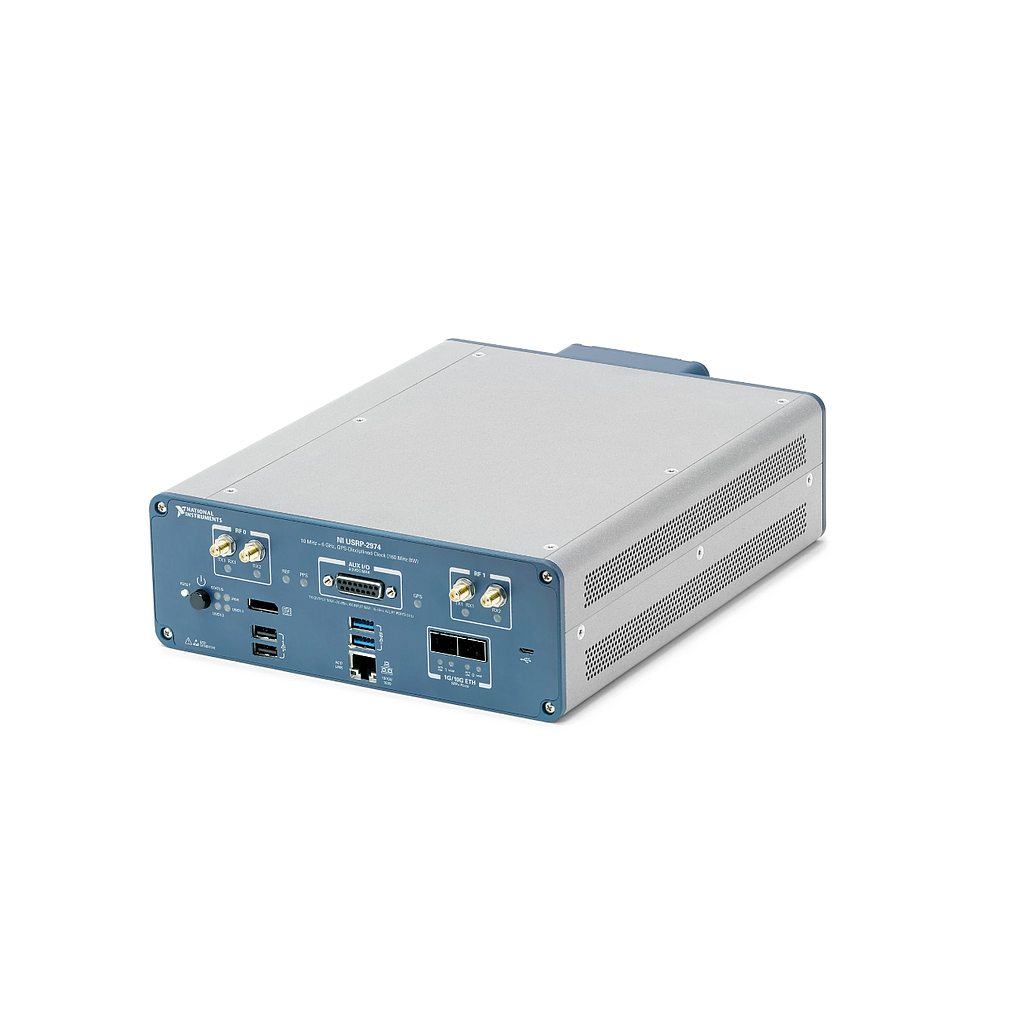
NI USRP-2974 软件无线电设备 (Embedded SDR, 10 MHz-6 GHz, 160 MHz BW)
制造商: NI Model: USRP-2974 P/N: 785606-01 - 联系
Conditions
Specifications are valid at 25 °C unless otherwise noted.
Controller
System on module (SoM): Congatec COM Express conga-TS170
CPU: Intel Core i7 6822EQ (2 GHz Quad Core)
Memory: SO-DIMM DDR4 8 GB
SFP+: 10G ETH connection to the SoM
Cabled PCIe: PCIe Gen 2 x4
MicroUSB: USB-to-UART to the SoM
RJ45: 1G ETH host connection
FPGA and Baseband
FPGA: Kintex-7 XC7K410T
DRAM: 1 GB
Baseband analog-to-digital converter (ADC) resolution: 14 bit
Baseband digital-to-analog converter (DAC) resolution: 16 bit
ADC spurious-free dynamic range (sFDR) 88 dB DAC sFDR 80 dB
Maximum I/Q sample rate: 200 MS/s
SFP+: High speed serial link to one of the FPGA GTX transceivers
Transmitter
Number of channels: 2
Frequency range: 10 MHz to 6 GHz
Frequency step: <1 kHz
Maximum output power (P-out): 5 mW to 100 mW (7 dBm to 20 dBm)
Gain range: 0 dB to 31.5 dB
Gain step: 0.5 dB
Maximum instantaneous real-time bandwidth: 160 MHz
Receiver
Number of channels: 2
Frequency range: 10 MHz to 6 GHz
Frequency step: <1 kHz
Gain range: 0 dB to 37.5 dB
Gain step: 0.5 dB
Maximum input power (Pin): +10 dBm
Noise figure: 5 dB to 7 dB
Maximum instantaneous real-time bandwidt: 160 MHz
Provides deterministic control of transceivers using an onboard FPGA and processor for rapidly prototyping high-performance wireless communications systems.
The USRP Software Defined Radio Stand-Alone Device consists of an onboard processor, FPGA, and RF front end. You can program this device using either LabVIEW Communications System Design Suite or an open-source software workflow, depending on the operating system you choose. You can provision the device with NI Linux Real-Time, Linux Fedora, or Linux Ubuntu real-time operating systems. The USRP Software Defined Radio Stand-Alone Device enables you to prototype a range of advanced research applications such as stand-alone LTE or 802.11 device emulation; Medium Access Control (MAC) algorithm development; multiple input, multiple output (MIMO); heterogeneous networks; LTE relaying; RF compressive sampling; spectrum sensing; cognitive radio; beamforming; and direction finding.The registered trademark Linux® is used pursuant to a sublicense from LMI, the exclusive licensee of Linus Torvalds, owner of the mark on a worldwide basis.
Datasheet
- 质量承诺
- 正品保修
- 送货到家
- 交易简单化
